AI Chatbots vs. Non-AI Chatbots¶
In general, chatbots are made to scale out human-human communications (e.g., product marketing and customer support) through automation. Depending on the underlying technologies used, today's chatbots fall into two broad categories: Non-AI chatbots and AI chatbots.
A Quick Comparison¶
Non-AI chatbots focus on automating simple tasks (e.g., broadcasting messages) with little intelligence, while AI chatbots focus on automating tasks, including complex tasks that involve highly diverse user interactions, with a human touch. The table below summarizes the key differences between the two and their suitable applications, respectively.
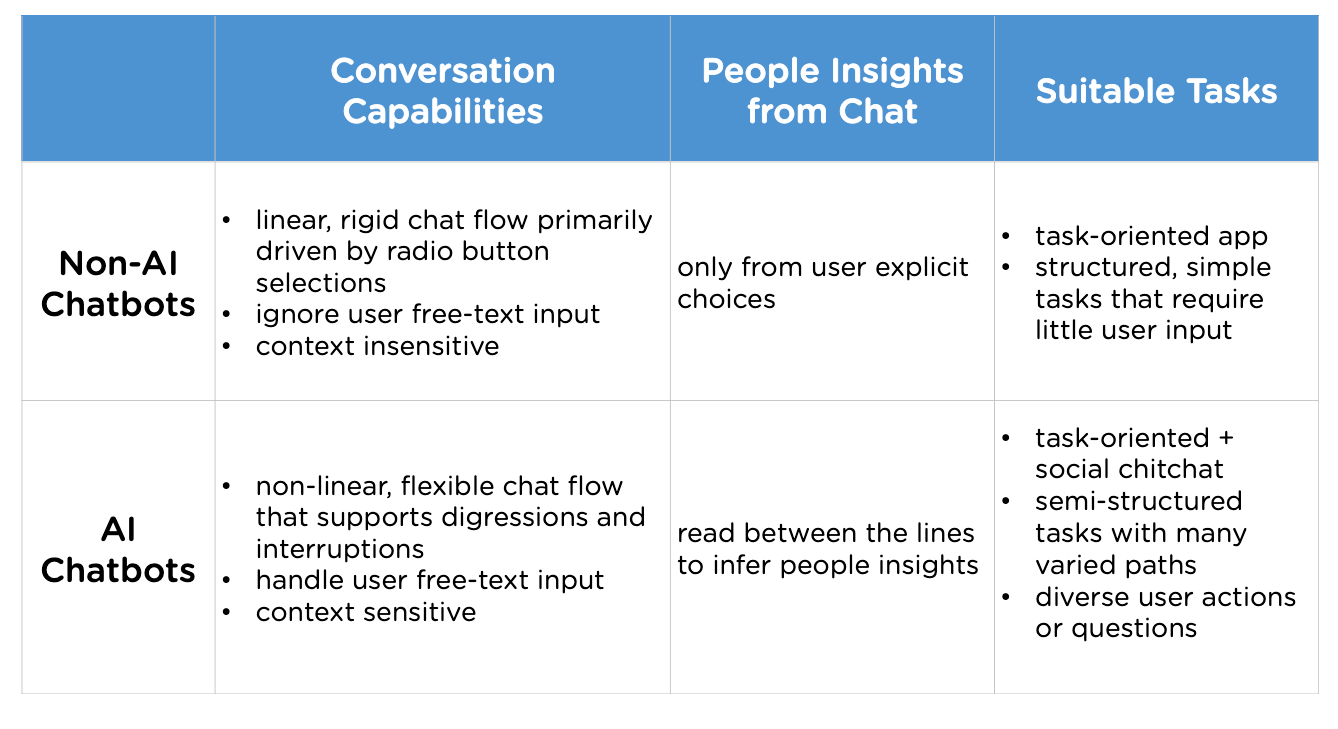
Juji Studio enables you to easily create powerful AI chatbots with built-in machine intelligence. Your application can often help you decide whether you need an AI chatbot. For example, if you need a chatbot just to broadcast messages but ignore any user interactions (e.g., user questions), you probably do not need an AI chatbot. On the other hand, if you want your chatbot to interactively engage and help your audience, e.g., answering user product inquiries while introducing products, then you need an AI chatbot.
Conversation Capabilities¶
AI chatbots and non-AI chatbots differ greatly in their capabilities in carrying on and managing conversations that involve natural language (free-text) communications. The type of communications you want to support helps you decide whether you need a non-AI or AI chatbot.
Non-AI Chatbots¶
Most non-AI chatbots are also known as "button bots", which drive a fixed chat flow that requires users to click on a set of choice buttons and move a "chat" forward as shown below.
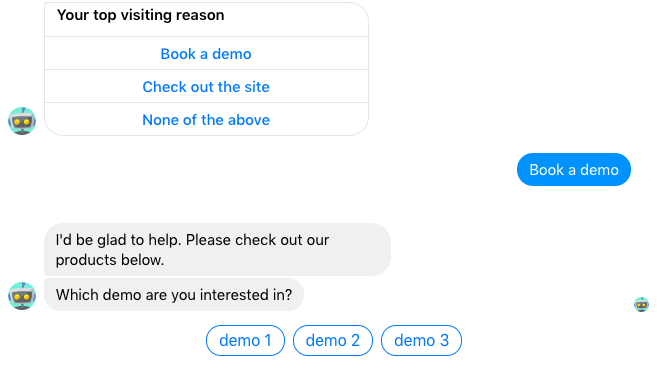
In such a flow, users are not allowed to interrupt or deviate from the flow, let alone asking questions or making requests during the flow (e.g., user questions are simply ignored). Such chatbots are suitable for only very simple tasks during which user actions can be highly anticipated (e.g., only a couple of choices to make) and users are unlikely to deviate from a pre-defined chat flow.
AI Chatbots¶
In contrast, AI chatbots support a natural, fluid conversation during which they can actively listen to users' natural language input, allowing users to pose questions and deviate from a planned chat flow. The following screenshot shows that a user poses a free-text question instead of answering a chatbot's initial inquiry. The chatbot was able to recognize the free-text question and responds to it instantaneously. In addition, the chatbot remembers the conversation context, and reasks the question.

In addition to supporting task-oriented chats (e.g., answering user questions), AI chatbots are capable of social chitchats. Below is an example showing a social chat between a chatbot and a user:
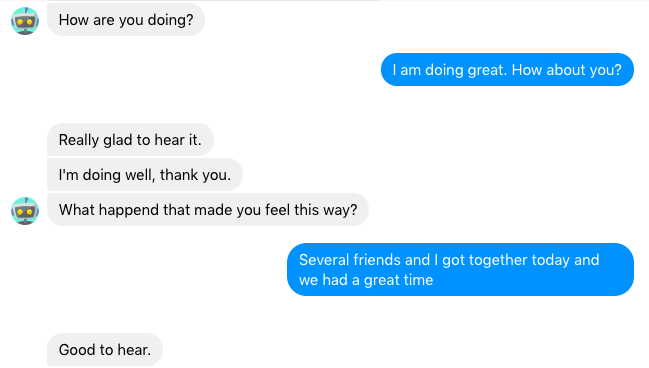
As shown above, the chatbot can recognize user input and carry on a conversation naturally. Juji provides a dialog library that contains thousands of built-in mini conversations, which can be directly used to support various social chitchats.
People Insights from Chat¶
Having a conversation is a natural way to get to know a person and use the understanding to best help the person. Since chatbots aim at scaling out human-human communications, ideally chatbots should get to know their users and use such knowledge to best help their users. The level of understanding about your audience that you want to obtain can also help you decide whether you need a non-AI or AI chatbot.
Non-AI Chatbots¶
Since non-AI chatbots typically do not interpret users' natural language expressions, their understanding of users is often limited. For example, their understanding of users is limited at eliciting users' choices or preferences from button selections as described above. Extracting richer information or implicit meanings from natural language expressions is not part of the user understanding process in non-AI chatbots.
AI Chatbots¶
On the other hand, AI chatbots can interpret users' free-text expressions, which enable them to gain a deeper understanding of users. The example shown below indicates that not only does an AI chatbot understand that a user dislikes the movie in question, but it is also able to gather the rationale behind the user's negative sentiment.
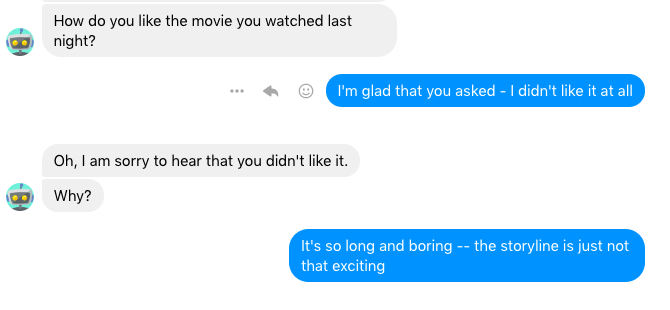
Furthermore, a capable AI chatbot can read between the lines and automatically infer deep people insights from a chat. For example, such a chatbot may infer a user's implicit needs and wants, who is family-oriented and family safety is the top priority. It can then use such insights to personalize the service, such as recommending products or services that meet the needs of the family. Similarly, an AI chatbot may infer that a user is impulsive and a quick decision maker, the chatbot may remind the user of checking facts before making a decision. Below shows two examples where a chatbot "coaches" two different candidates to do their best in an interview based on their unique characteristics.
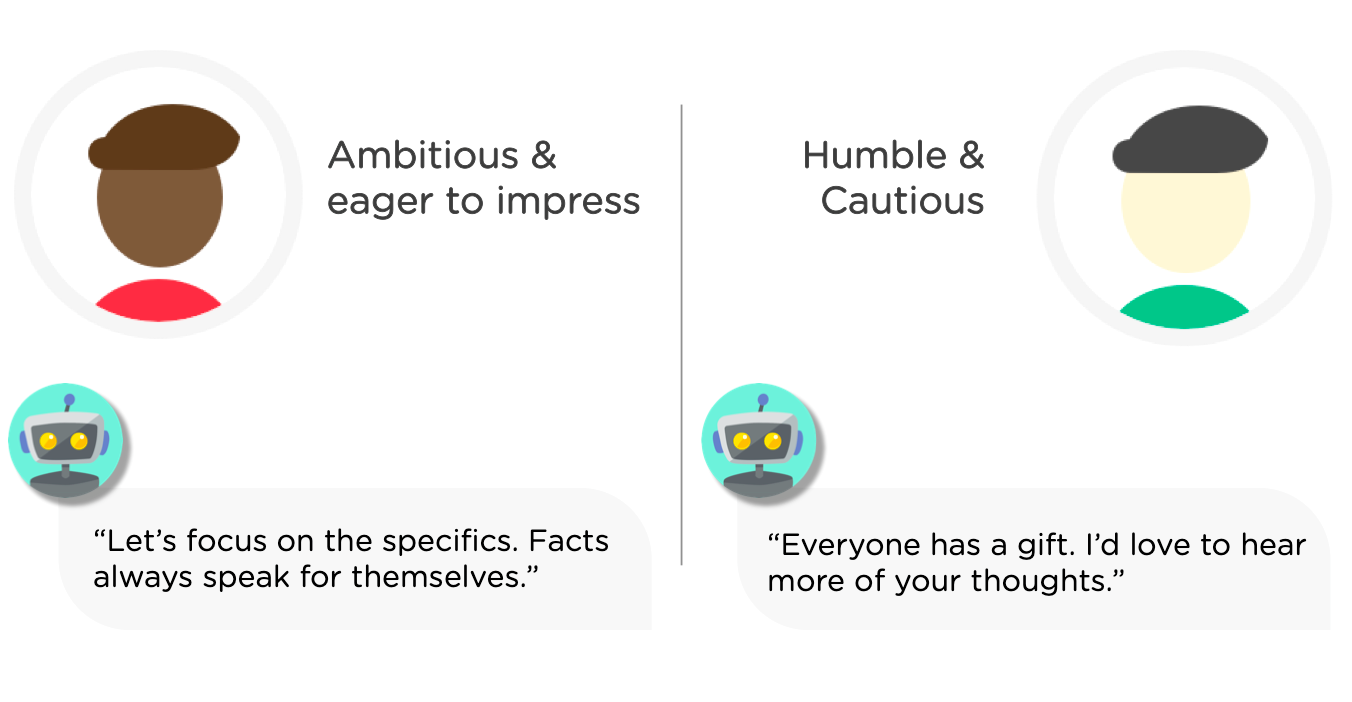
What's Next¶
Now you know the differences between non-AI chatbots and AI chatbots. You may be wondering whether you'd need an AI chatbot. Use these questions to determin whether you need an AI chatbot.